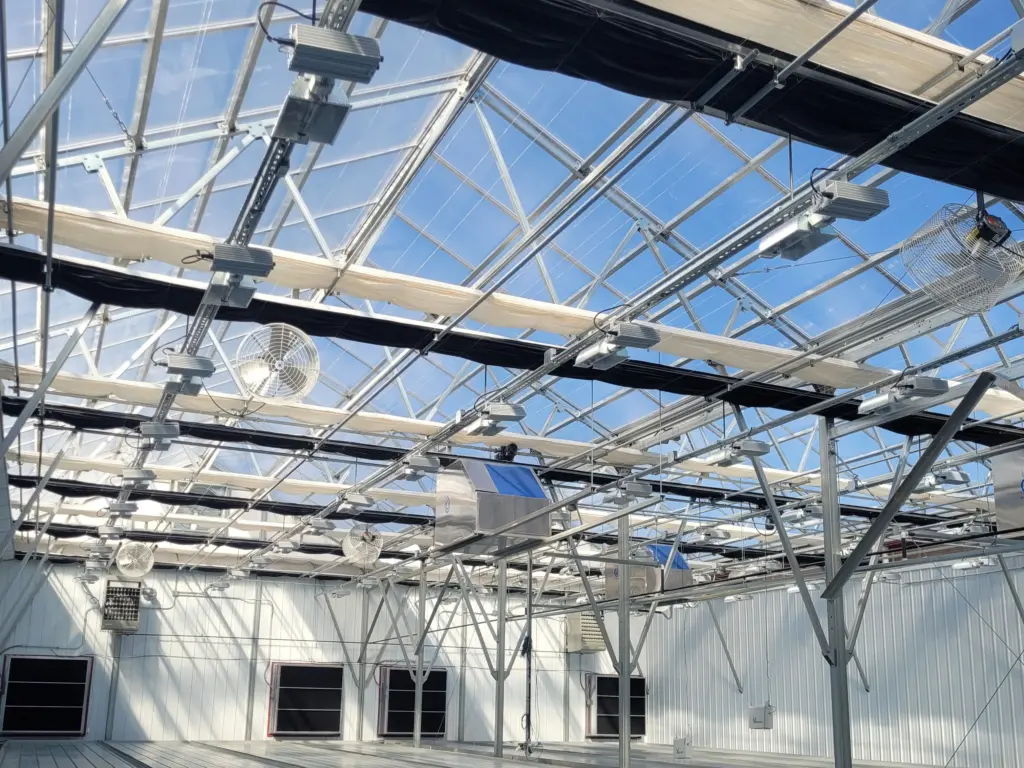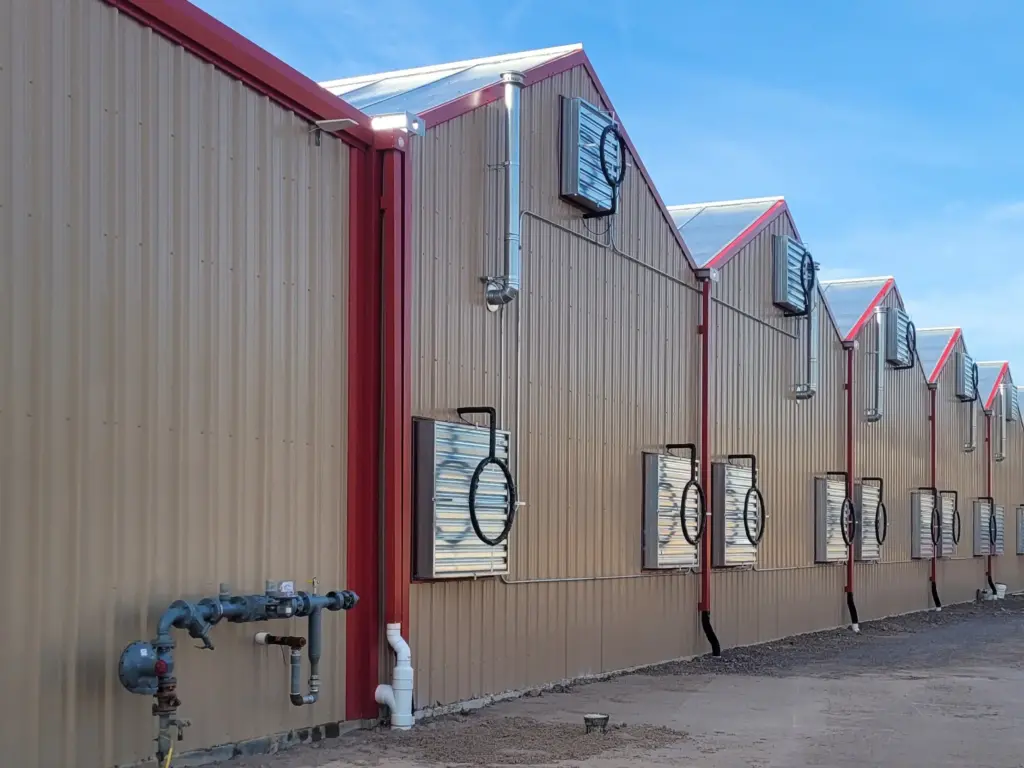What Is A Hybrid Greenhouse And Why Should Indoor Cannabis Growers Consider Transitioning To One?
Today’s cannabis operations need to be more adaptable and sustainable than ever to maintain success. As a result, it’s becoming increasingly important for these growers to find ways to minimize expenses, without impacting the quality of their harvests.
Indoor facilities are generally inefficient and cost-intensive by nature, since they rely on extensive lighting systems to stimulate plant growth. On the other hand, greenhouses are renowned for their energy-efficiency, allowing operations to benefit from the lower price tag that comes with producing sun-grown crops.
As industry standards develop and new regulatory requirements are implemented, one trend that indoor growers are capitalizing on is the transition into a more versatile structure, known as the hybrid greenhouse. With this style of cultivation facility, cannabis growers in particular are able to yield high-quality harvests on a year-round basis, while also combatting the rising energy costs that plague so many operations.
Ultimately, the final decision when choosing a cannabis facility should come down to profit margin. If indoor growers want to change the setting of their operation, without switching to a traditional greenhouse design, then a hybrid greenhouse may offer the perfect way for them to reap the benefits of natural sunlight and increase their bottom line.
What Is A Hybrid Greenhouse?
A hybrid greenhouse takes some of the best aspects of greenhouse production and improves on the conventional indoor facility design, creating an innovative structure that is relatively unique to cannabis. Rather than a typical greenhouse profile that features a galvanized steel base or aluminum frame with clear cladding all around, this concept combines the clear roof found on custom greenhouses and greenhouse kits with the solid sidewalls utilized in warehouse structures.
Generally, the roof on a hybrid greenhouse should be made from a high-quality cladding, like twin-wall polycarbonate panels. The sidewalls can then either be constructed from metal cladding or white-black-white polycarbonate, depending on an operation’s needs and budget. These materials enable hybrid greenhouse growers to maximize their structure’s R-value, while also simplifying light dep and helping their plants take advantage of natural sunlight.
See How This Cannabis Operation Uses Their GrowSpan Hybrid Greenhouse
Benefits Of A Hybrid Greenhouse
Access To Natural Sunlight
Natural sunlight is arguably the biggest advantage that coincides with greenhouse production, as it can benefit both a grower’s plants and their wallet.
Sunlight provides cannabis with a full spectrum of light, which in many cases, helps produce buds with a wider terpene profile. Artificial light fixtures do their best to replicate these same light frequencies offered by the sun, and some can, but they are often higher in cost and may not fit into every grower’s budget.
Natural light can provide additional benefits when it is filtered through certain greenhouse claddings, like a twin-wall roof made from polycarbonate panels. By incorporating this material into their structure’s design, hybrid greenhouse growers are able to supply plants with valuable light diffusion.
Diffused light has been known to improve cannabis growth considerably. It not only penetrates deeper into the surfaces of plant leaves, but it also disperses around the plants and reaches leaves further down, leading to more uniform development and increasing yields. Additionally, light diffusion is a valuable tool for protecting plants from scorching and reducing the proliferation of fungal spores and insects.

Energy considerations continue to play a key role in growers’ decision-making process as well, with electricity consumption being one of the major contributors. According to a study from 2023, cannabis growth is responsible for 1% of all U.S electricity usage, and is expected to rise to 3% by 2035.
This has caused many state and local lawmakers to begin regulating electricity usage in commercial cannabis cultivation facilities, requiring growers to meet various energy-efficiency standards or ensure a portion of their energy comes from renewable resources. Consequently, natural sunlight has become much more important for growers to try and harness for their own operation.
Sign Up Now For More Information
Streamlined Light Dep And Climate Control
Precision climate and photoperiod control are features long touted by indoor growers, but in truth, modern technological advancements have leveled the playing field. Greenhouses structures can be outfitted with automated light dep systems that provide growers with complete influence over light cycles. Likewise, the best greenhouse manufacturers are able to design facilities with the same degree of environmental control as indoor warehouses.
For cannabis growers, a hybrid greenhouse further streamlines these processes. As opposed to using a retractable curtain system on the sidewalls as well, operations only need blackout material to cover their roof. These automated light dep kits can be just as easy to manage as turning off the lights in an indoor facility, since they are able to programmed and put on a strict schedule, opening and closing at set times.
On the structure’s sidewalls and end walls, white-black-white polycarbonate can certainly be a viable option, but growers may also want to consider implementing insulated metal panels (IMPs). This will allow them to achieve an even higher R-value and make their structure more energy-efficient, regardless of the temperature outside. IMPs can be a worthwhile investment for growers with a larger greenhouse size in particular, as these will simplify temperature control in a more expansive production space, reducing energy consumption and helping save money over time.

A hybrid greenhouse that’s equipped with IMPs can also be highly beneficial for cold-climate cannabis growers. In norther regions, superior heat retention and increased protection against severe weather conditions are key to continuing production year-round. Along with providing an R-value anywhere from 14-57, IMPs from the right manufacturer will be incredibly strong, moisture-resistant and rust-resistant, leading to a relatively maintenance-free structure.
Whether operations are looking to transition to a greenhouse structure or not, energy-efficiency and sustainability are beginning to shape the future of the cannabis industry. In the long run, a hybrid greenhouse is going to offer an ideal solution for growers wanting to optimize product quality, while also adapting to greener, more rigorous energy standards.
To learn more about how a hybrid greenhouse can benefit your cannabis grow, call or Request a Quote today.
Related Articles
Creating THe Ultimate Cannabis Greenhouse Environment
To create industry-leading cannabis greenhouses, GrowSpan focuses on five key environmental factors that affect high-quality crop growth.
Making Life Easier With A Light Dep Greenhouse Kit
Through state-of-the-art structures and automated light dep, operations can gain complete control over growth cycles and give their plants the environment they need to thrive.
The Definitive Guide To Why Growing Cannabis In A Greenhouse Is Better
Choosing the best setting for a cannabis operation can be a subject of debate for growers, and there are a number of factors at play that can impact their decision.
6 Features Every Cannabis Grower Needs To Incorporate Into Their Greenhouse
The features laid out in this blog can help growers make a lasting impression on the market and set them up for long-term success.

